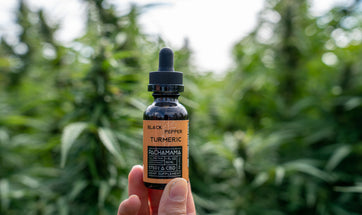the endocannabinoid system
When all systems in your body are working together, your body is able to naturally flow into a state of harmony and equilibrium. The key to achieving such balance starts by unearthing the collective aspects of your endocannabinoid system (ECS).
We understand that the term “endocannabinoid system” sounds intimidating. That’s why we are here to break it down. For starters, let’s begin with the word endocannabinoid. The term, “endo” stems from the word "endogenous", which refers to substances and processes that originate from within a system. In this case, the substances and processes are endocannabinoids and the system they work in is the endocannabinoid system.
It Has One Job
The ECS has one primary job: to regulate the body’s other systems.
Think of the ECS as the body’s primary regulatory mechanism that puts things like your immune and nervous system in balance, and there is only very special compound that has been found to work extraordinarily well with this primary regulatory system.
That compound is CBD.

all the working parts
CBD is a rather illustrious compound found in the hemp plant. It has quickly gained a large, diverse crowd of consumers, making it one of the most widely used herbal extracts of the 21st century. If you know about CBD and have been using it have you ever thought about how it's working in your body? The ECS and CBD work together to harmonize the body and mind into a state of balance that is unattainable from any other supplement.
Let's start with the basics.
cannabinoids
A cannabinoid is a diverse compound produced naturally by the body and also found in cannabis. Think of cannabinoids as messengers. They help the body by binding to and communicating with receptors. There are more than 100 known and studied cannabinoids that all fall into two categories: endogenous and exogenous.
Endogenous
Sometimes referred to as endocannabinoids, these are simply cannabinoids that the body can produce on its own. Anandamide and 2-AG are the most present. The body produces them to regulate functions like sleep or pain and to trigger other balancing physiological functions. They are only synthesized when the body is in need and are broken down by naturally occurring enzymes shortly after.
Exogenous
These are cannabinoids that come from outside of the body, like from CBD or hemp oil. The well-known compounds, CBD and THC, are both exogenous. They can be found in cannabis as well as in other herbs. In contrast with endocannabinoids, exogenous cannabinoids stay in the body for much longer after entering and aren’t broken down by enzymes as quickly.
cannabinoid receptors
The two types of receptors within our ECS are the CB1 and CB2 receptors. The biggest difference between the two is where they reside in the body.
CB1 receptors are primarily found in the brain, although they are also present along the spinal cord and in some organs. Especially high amounts are located in cortical regions, the cerebellum and the hippocampus, which helps to explain their pharmacodynamic functions.
CB2 receptors are dense in immune cells and in the peripheral nervous system. For this reason, they are thought to play a significant role in the maintenance of inflammation and immune function support.
The ECS is essentially a network of both CB1 and CB2 receptors and the cannabinoids that communicate with nearly all flowing parts of the body and mind.
cbd works with receptors
CBD works indirectly with receptors as it doesn’t directly bind with the CB1 and CB2 receptors. The ECS is primarily designed to bind with endogenous cannabinoids. CBD signals receptors and triggers them into synthesizing endogenous cannabinoids while inhibiting the enzymes that break them down. CBD acts as a messenger while the receptors deliver that message to the rest of the ECS. Once exogenous cannabinoids like CBD enter the body, they have the ability to unlock the most balancing potential that the ECS offers.
In order to regulate the ECS, it can be extremely beneficial to supplement with a source of CBD that can work with the body’s naturally producing compounds – giving the ECS the support it needs to run smoothly.
the endocannabinoid system promotes balance (homeostasis)

Homeostasis is defined as a state of balance. Since whole-body health requires continuous balance, it is crucial to keep the ECS running smoothly, ensuring true holistic health.
Homeostasis can be veered off course by any type of stressor, whether it is physical or mental. When this happens, the body produces endocannabinoids. These endocannabinoids deliver messages to cannabinoid receptors in the stressed area of the body. Endocannabinoids then signal the receptors to synthesize cannabinoids that work to put your body in balance once again.
the entourage effect
One way to keep the ECS running at its peak level of performance is by activating the entourage effect. The entourage effect can be described as the enhanced outcome that occurs from the synergy of all the hemp plant’s compounds – such as cannabinoids and terpenes – working together. It is an intrinsic bond between the body’s ECS and the myriad of compounds that occur in hemp.
While CBD alone offers a degree of therapeutic value, a full spectrum or broad spectrum CBD product that contains a full cannabinoid and terpene profile, allows the body to reach a deeper range of value that would otherwise be untapped.
To expand your knowledge on the entourage effect, read our post on it, here.
Want to learn more? Sign up for our newsletter, here!
OUR NEWSLETTER
Get the latest news you need, straight to your inbox.





